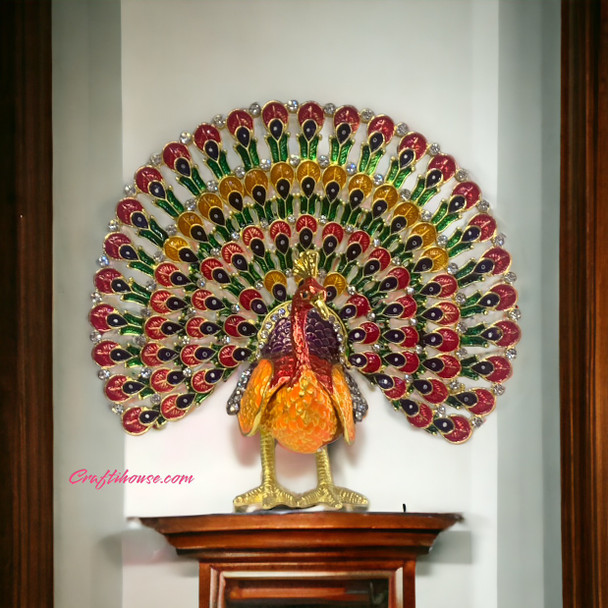Majestic Peacock: A Pictorial Tapestry of Elegance History
The Majestic Peacock: A Pictorial Tapestry of History and Elegance
In the realm of ornithology, few birds captivate the human imagination quite like the peacock. Known for its resplendent plumage and graceful demeanor, the peacock has woven itself into the cultural tapestry of various civilizations throughout history. This article delves into the fascinating history, symbolism, and unique characteristics that make the peacock a true marvel of the avian world.
The Historical Journey:
The peacock's historical journey can be traced back to ancient times, with its origins rooted in the Indian subcontinent. Archaeological evidence suggests that the peacock's symbolism and significance were prevalent in various ancient cultures, including Greek, Roman, and Persian civilizations.
In ancient Greek mythology, the peacock was associated with the goddess Hera, the queen of the gods. According to myth, Hera adorned her chariot with the eyes of the peacock's feathers, symbolizing the watchful eyes of the stars. In Hindu mythology, the peacock is linked to Saraswati, the goddess of wisdom, as well as Kartikeya, the god of war.
Peacocks also held significance in Persian culture, where they were considered a symbol of immortality and beauty. Persian royalty adorned themselves with peacock feathers, viewing them as a representation of regality and divinity.
The Peacock's Plumage:
The peacock's most distinctive feature is undoubtedly its stunning plumage. The male, known as the peafowl, boasts a vibrant array of iridescent blues, greens, and purples, while its long and extravagant tail feathers form a captivating display during courtship rituals. This flamboyant display serves as a means to attract a mate, with the intricate patterns and vibrant colors signaling genetic fitness.
Contrary to popular belief, the term "peacock" technically refers to the male, while the female is called a "peahen." Collectively, they are known as peafowl, and their offspring are called peachicks.
Symbolism and Cultural Significance:
Beyond their physical allure, peacocks have held symbolic significance in various cultures. In Christianity, the peacock has been associated with resurrection and immortality due to the belief that its flesh does not decay after death. In Hinduism, the peacock is revered as a symbol of benevolence and patience.
In modern times, the peacock has become a symbol of beauty and elegance, often employed in various art forms and design. Its graceful form and vivid color palette have made it a popular motif in fashion, home decor, and even corporate branding.
Conservation and Preservation:
While the peacock's beauty continues to inspire awe, it is essential to recognize the importance of conservation efforts to protect these majestic birds. Habitat loss, poaching, and illegal trade pose threats to peafowl populations in the wild. Organizations and wildlife enthusiasts worldwide are actively engaged in conservation initiatives to preserve the natural habitats of peafowl and raise awareness about the importance of protecting these magnificent creatures.
Conclusion:
The peacock's journey through history is as colorful and enchanting as its plumage. From ancient mythologies to modern symbolism, this regal bird has left an indelible mark on diverse cultures around the globe. As we marvel at the beauty of peafowl, let us also be stewards of their conservation, ensuring that future generations can continue to be captivated by the resplendent elegance of the peacock.
Recent Posts
-
Order the Best Boss Day Gifts for Male & Female Bosses in the UAE from Craftihouse.com
Every year, Boss’s Day is the perfect opportunity to show appreciation for the people who lead, ment …13th Oct 2025 -
How This Gift Came to Life: The Story Behind Our Palm Leaf Baskets
How This Gift Came to Life: The Story Behind Our Palm Leaf Baskets In a world where everything is be …8th Oct 2025 -
Handmade Leather Key Chains – Timeless Souvenirs & Everyday Companions
Handmade Leather Key Chains – Timeless Souvenirs & Everyday Companions Introduction In a world where …25th Sep 2025




